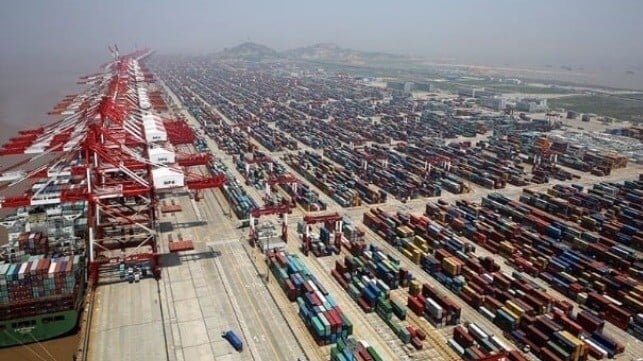Shanghai Port Complex Exceeds 50 Million TEU Mark
The Shanghai Port complex achieved a significant milestone on December 22, surpassing 50 million TEU for the first time. This achievement solidifies the port’s position as the world’s busiest seaport for the 15th consecutive year.
Container operations at the port have come a long way since its inception in 1978, when it handled just 7,951 TEU. The port hit the 1 million TEU mark in 1994 and has since experienced exponential growth. By 2003, throughput had exceeded 10 million TEU, and the port reached 40 million TEU in 2017. Last year, the port handled 49.16 million TEU, setting the stage for its latest milestone.
Infrastructure and Network Expansion
Port officials credit the port’s continued growth to its broad network and development of infrastructure. The Shanghai Port currently boasts nearly 350 international routes, connecting over 700 ports in more than 200 countries. Collaboration with 22 ports along the Yangtze River, including 16 ports in the Yangtze River Delta, has further enhanced the port’s regional leadership.
The port’s water-to-water transshipment ratio is expected to surpass 60 percent, a record high, underscoring its efficiency in handling cargo. Additionally, the establishment of sea-rail transport connections for containers has streamlined operations. With 10 routes running daily, the port anticipates exceeding 900,000 TEU on the sea-rail connection by 2024, representing a 40 percent year-on-year volume increase.
Automation and Digitalization
Automation plays a crucial role in the port’s ability to manage the massive volume of containers. Fully automated unmanned guided vehicles are deployed, enhancing operational efficiency. Furthermore, the port has embraced digitalization, with the Yangshan Phase IV automated terminal leading the way. This terminal has handled 35 million TEU in the past seven years, reducing personnel by 70 percent and increasing overall efficiency by 30 percent.
Expansion and Sustainability Initiatives
The port’s expansion efforts include the development of the Luojing Container Terminal on the south bank of the Yangtze River estuary. This project repurposes a coal and ore handling terminal for container operations, with Phase I featuring four berths and an annual designed throughput of 2.6 million TEU.
Notably, the Shanghai Port is also at the forefront of sustainable practices in the shipping industry. Bonded LNG bunkering operations for 125 international vessels have been completed, with plans to handle 450,000 cbm of LNG this year, marking a 70 percent increase. The port aims to achieve regular green methanol bunkering by 2025, with infrastructure enhancements underway to support this goal.
Global Collaboration for Green Shipping
Since 2023, the Shanghai Port has been collaborating on a joint project to establish a “green shipping corridor” with the Port of Los Angeles and the Port of Hamburg. This initiative aims to create the first long-distance international green shipping corridor, promoting sustainable practices in maritime transportation.

